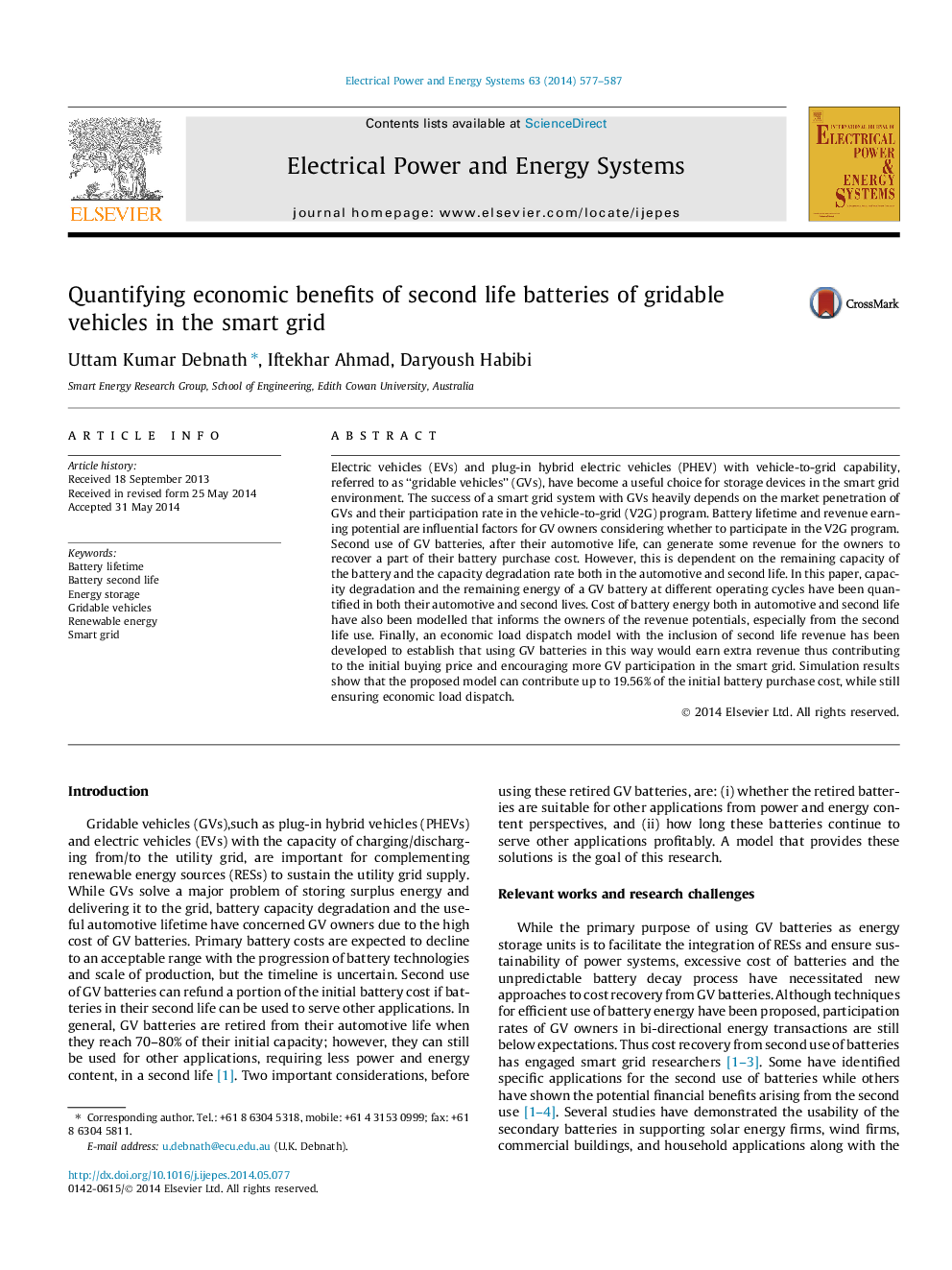| Article ID | Journal | Published Year | Pages | File Type |
|---|---|---|---|---|
| 6860172 | International Journal of Electrical Power & Energy Systems | 2014 | 11 Pages |
Abstract
Electric vehicles (EVs) and plug-in hybrid electric vehicles (PHEV) with vehicle-to-grid capability, referred to as “gridable vehicles” (GVs), have become a useful choice for storage devices in the smart grid environment. The success of a smart grid system with GVs heavily depends on the market penetration of GVs and their participation rate in the vehicle-to-grid (V2G) program. Battery lifetime and revenue earning potential are influential factors for GV owners considering whether to participate in the V2G program. Second use of GV batteries, after their automotive life, can generate some revenue for the owners to recover a part of their battery purchase cost. However, this is dependent on the remaining capacity of the battery and the capacity degradation rate both in the automotive and second life. In this paper, capacity degradation and the remaining energy of a GV battery at different operating cycles have been quantified in both their automotive and second lives. Cost of battery energy both in automotive and second life have also been modelled that informs the owners of the revenue potentials, especially from the second life use. Finally, an economic load dispatch model with the inclusion of second life revenue has been developed to establish that using GV batteries in this way would earn extra revenue thus contributing to the initial buying price and encouraging more GV participation in the smart grid. Simulation results show that the proposed model can contribute up to 19.56% of the initial battery purchase cost, while still ensuring economic load dispatch.
Related Topics
Physical Sciences and Engineering
Computer Science
Artificial Intelligence
Authors
Uttam Kumar Debnath, Iftekhar Ahmad, Daryoush Habibi,
